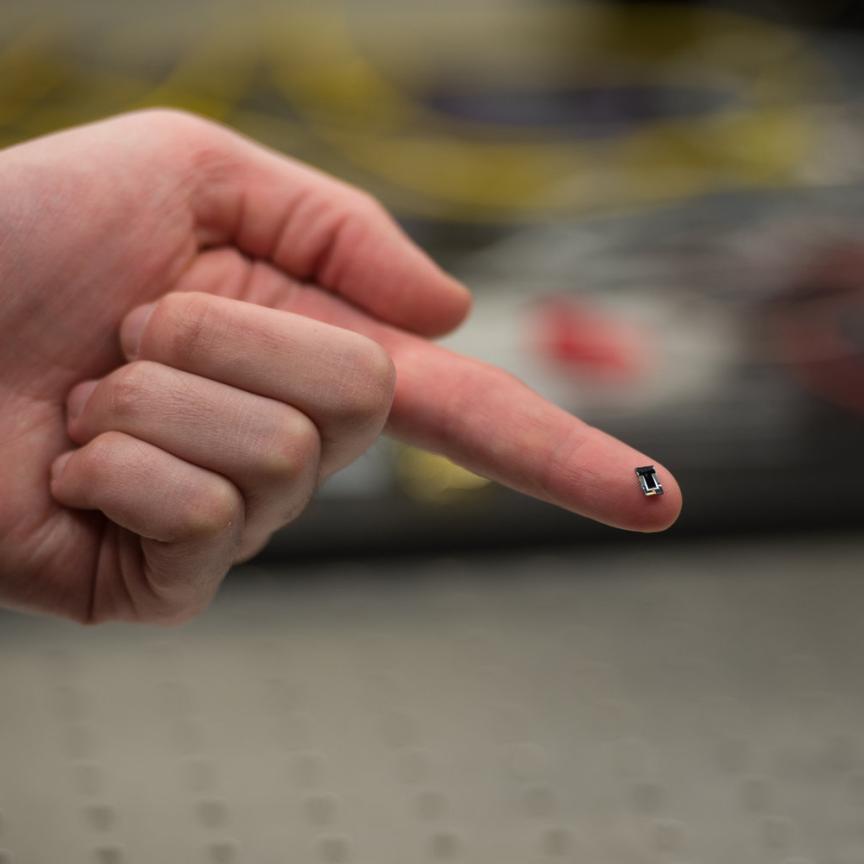How automotive companies can choose the right lidar technology for their applications, by Gemma Church
Light detection and ranging (lidar) is a remote sensing technology that’s gaining traction in sectors including medical, industrial and automotive. In the simplest terms, lidar technology relies on the reflected pulse from a light source to understand the surrounding environment.
There are two approaches to lidar: time of flight (TOF) and frequency modulated continuous wave (FMCW). Each one presents advantages and disadvantages, depending on the application in question.
Using TOF, a beam of light is reflected by an obstacle and this then bounces back to a photosensor. The sensor calculates the distance of the object. But background noise and light scatter can cause issues, affecting the accuracy of the measurements.
This is where FMCW methods can help. Instead of light pulses, a continuous ‘chirped’ laser is used, so the frequency of the signal keeps changing and the resulting difference in frequency is used to determine the position of an object. The lidar can also determine the speed of the object in question.
Analyse your options
But FMCW also requires more computing power than TOF, taking more time to build an accurate 3D model of the surrounding environment. It is also a newer technology compared to TOF and can be a bulky and expensive option.
So, which lidar approach is better for automotive applications? The answer to this question is not as simple as one may think.
Florian Friedl, group leader for automotive and optoelectronic components at Hamamatsu Photonics, explained: ‘Automotive lidar is just getting started. With higher levels of autonomy in cars, the demand for lidar will increase significantly in the coming years. However, there are several technologies for lidar and it is not yet clear which one is the best for which use case.’
Friedl added: ‘Currently, mostly TOF lidar is in use, but FMCW lidar is also under development. As we supply all kinds of optical technologies, we are able to offer solutions for close to anything and support the development of numerous applications with an unbiased opinion.’
The automotive applications for lidar technologies are also increasing as demand for smart and autonomous systems grow both in vehicles and the factories building those vehicles.
‘Lidar is an incredible method that is revolutionising the automotive industry for safer driving,’ Friedl said. ‘However, there are many ways of applying this method and depending on the approach, complex choices need to be made.’
Rapid response
For example, photodetectors must be sensitive enough to receive a high proportion of photons and, in automotive applications, it’s important that the sensors respond quickly and with full reliability. They also need to be cost-effective, suitable for mass production and able to tolerate a range of environmental conditions.
Working within the current industry quality standards is another area where Hamamatsu can provide the benefit of its experience. With more than 25 years of working in the automotive sector, it can provide highly reliable sensors that fulfil AEC-Q industry requirements. ‘One of the key benefits of working with us is our capability to develop and produce customised sensors and lasers based on specific customer requirements,’ added Friedl.
It’s important to the company that it works with individual customers to identify the right lidar solution to match their specific use case. Friedl said: ‘In our case, we help customers choose the optimum one. Depending on their application, we will look at sensitivity, noise, speed and reliability.’
As a manufacturer of optoelectronic products and semiconductors components, Hamamatsu Photonics provides a wide range of optical solutions, such as sensors and lasers, which are customised for specific lidar market needs. ‘We understand the growing interest in the automotive industry to develop lidar technologies, which is why we focus many of our efforts on developing the ideal solutions for this market,’ Friedl added.
In the company’s latest white paper, Friedl explains which lidar technology is best for automotive applications, revealing there is actually ‘still no such thing’. The white paper examines three key photodetector technologies, including PIN photodiodes, avalanche photodiodes (APDs) and multi-pixel photon counters (MPPCs), also known as silicon photomultipliers (SiPM).
Making sense of 2D
The manufacturer is also developing and investigating new lidar technologies to address the growing demand for sensing solutions to increase the sensitivity of 2D sensors. This is where single-photon avalanche diodes (SPADs) could help. Friedl explained: ‘For example, we can observe a push for 2D SPAD arrays to achieve a good image resolution even when detecting on very long ranges.’
The company is currently working on high-resolution 2D SPAD arrays with customisable ASIC integration for high-performance TOF lidar. ‘We are already in discussion with our lead customers and we expect these products to be available by the end of this year,’ according to Friedl.
A second major trend within lidar technologies is increased integration, as Friedl explained: ‘This means customers seeking to augment intelligence by combining, for example, readout integrated circuits and a kind of signal processing, all integrated directly with a sensor.’
Friedl also noted that demand for optical sensing technologies, in general, is increasing across the automotive industry. ‘With the shift to autonomous driving and electrical cars, there is a higher need for such applications and technologies. With our wide portfolio of different sensor technologies, we can provide solutions for many of these upcoming applications and already do so for other markets.’
It’s an exciting time for lidar technologies in the automotive industry. As more applications become apparent, more solutions will be available and more questions will be answered, helping automotive companies to develop next-generation vehicles with ever-advanced optical sensing technologies.
For more information about leading lidar technologies and the considerations automotive companies must take into consideration to build the vehicles of the future, download the latest white paper.


